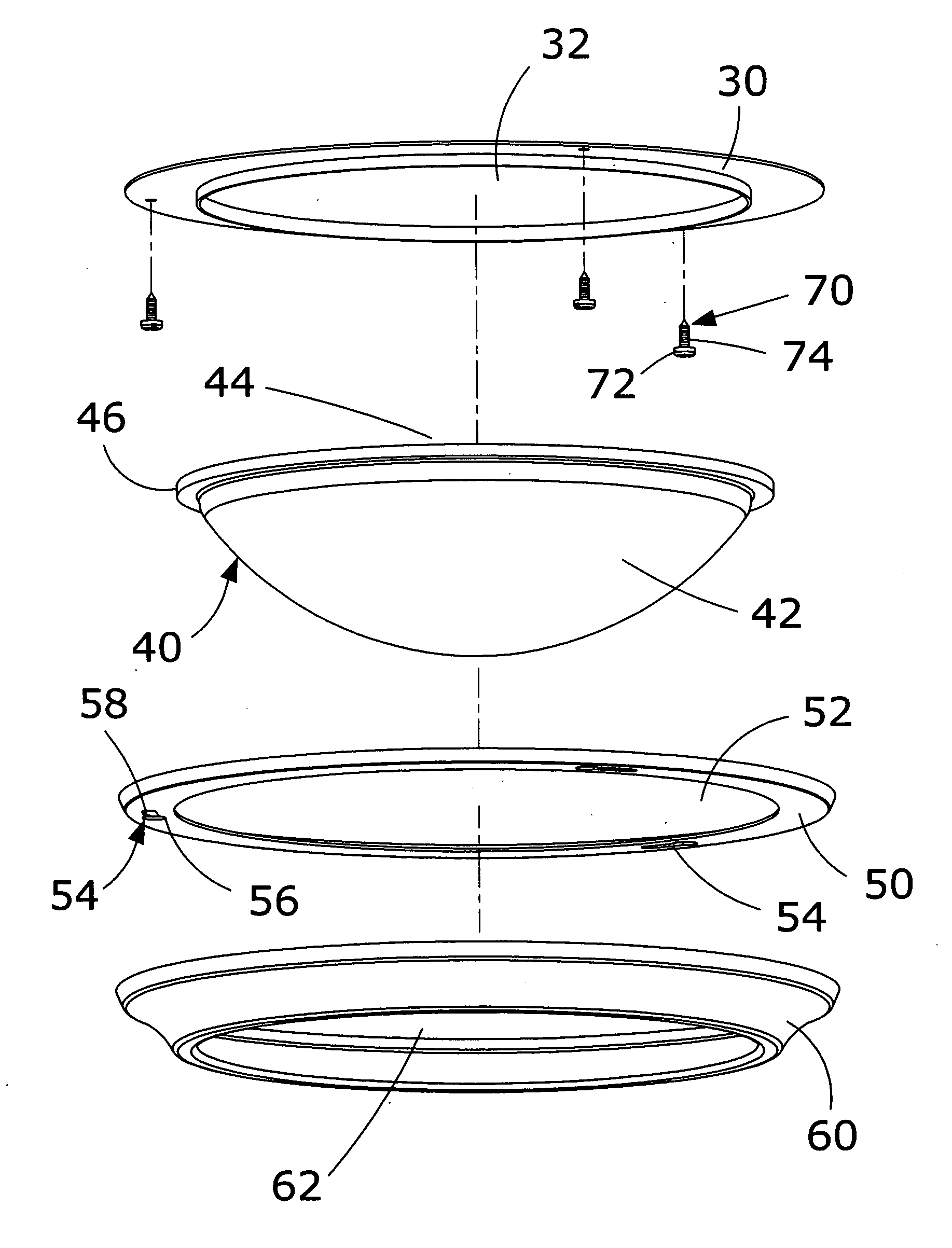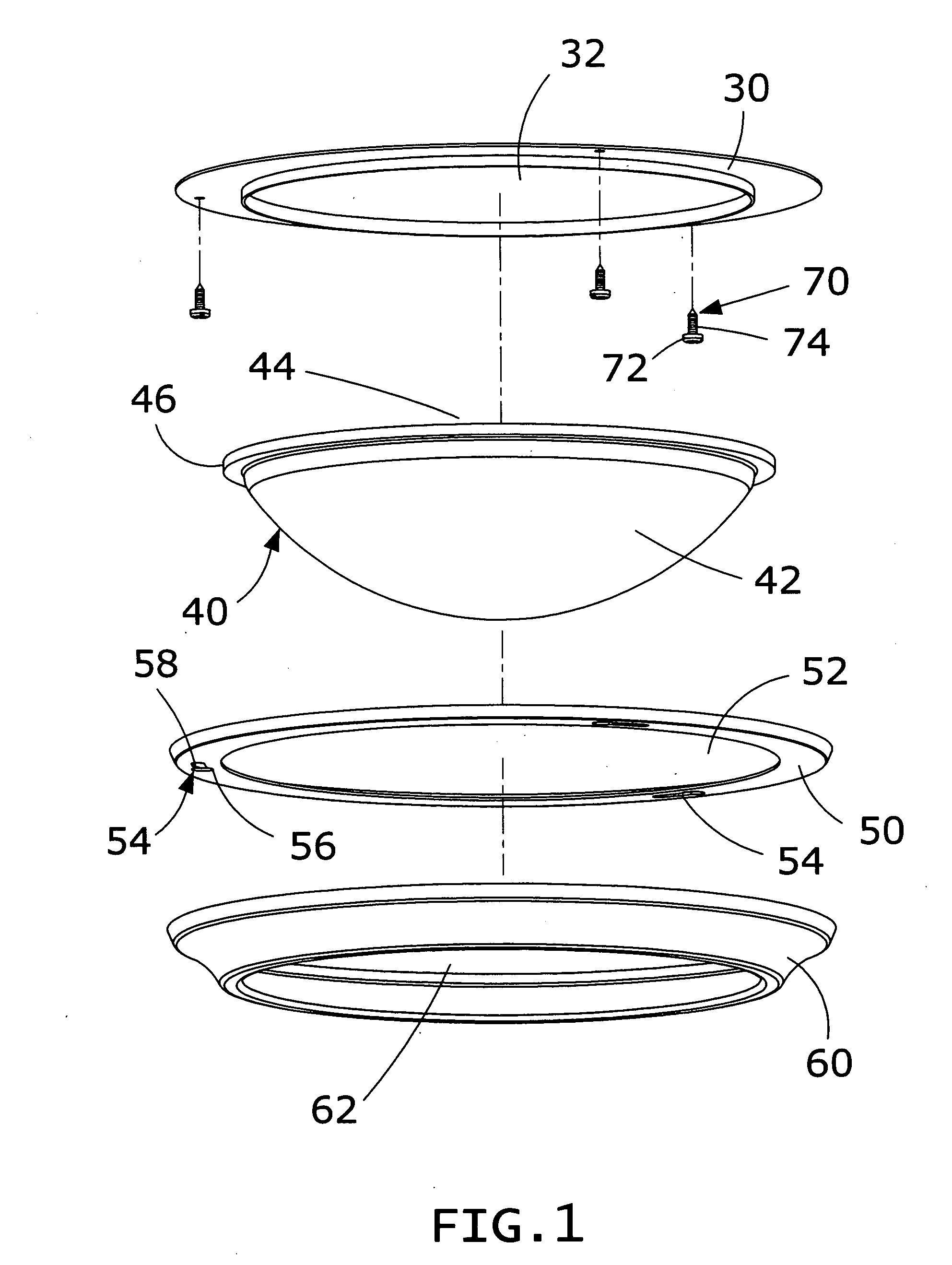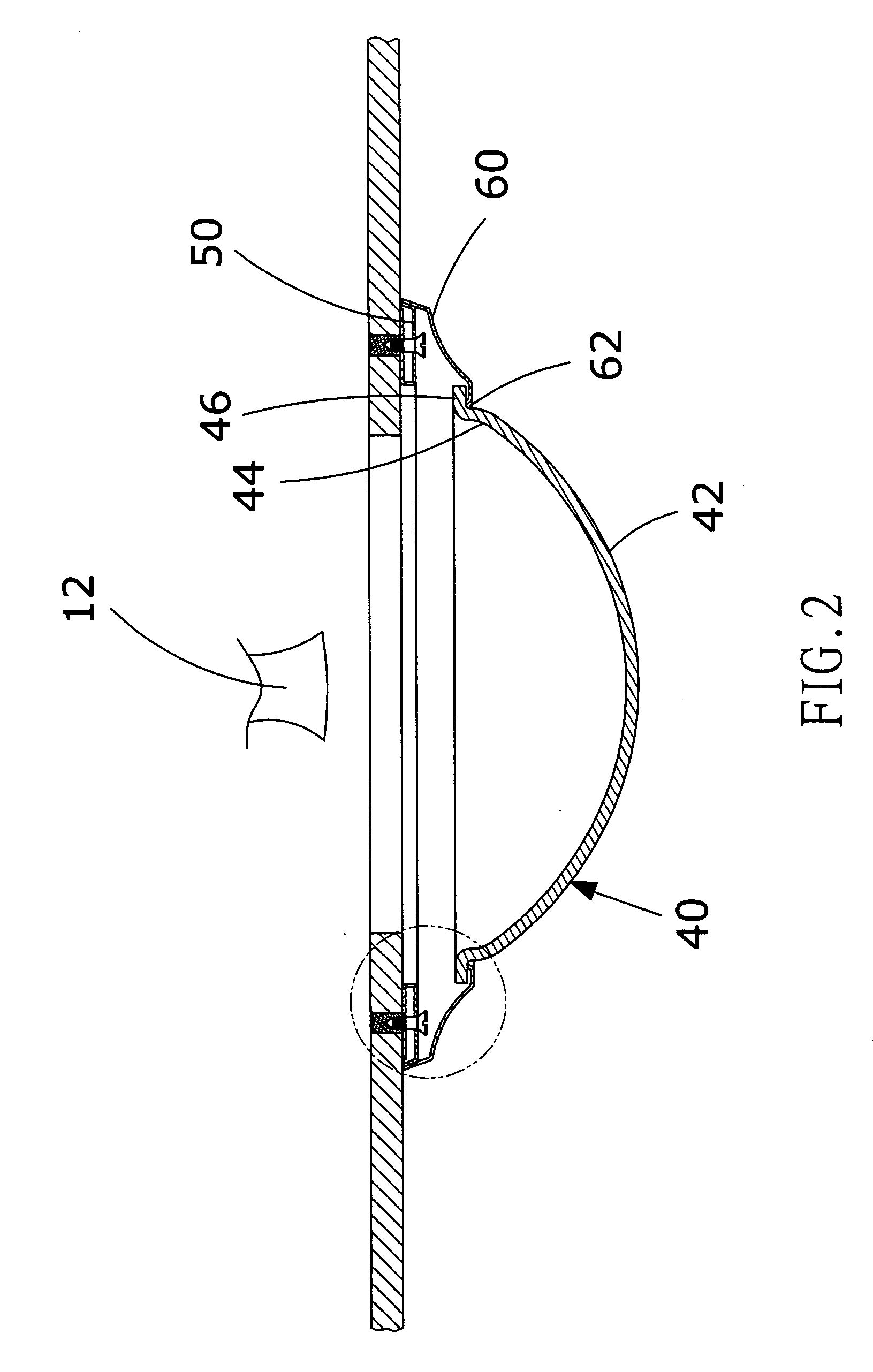Wall lamp
- Summary
- Abstract
- Description
- Claims
- Application Information
AI Technical Summary
Benefits of technology
Problems solved by technology
Method used
Image
Examples
Embodiment Construction
[0027] Referring to the drawings and initially to FIGS. 1-5, a wall lamp in accordance with the preferred embodiment of the present invention comprises a positioning disk 30, a lamp shade 40, a connecting disk 50, and a retaining disk 60.
[0028] The positioning disk 30 has an annular shape and has a central portion formed with a through hole 32.
[0029] The lamp shade 40 has a first end formed with an arc-shaped face 42 and a second end formed with an opening structure 44 having a periphery formed with a radially and outwardly extending annular lip 46.
[0030] The retaining disk 60 has an annular shape and has a central portion formed with an opening 62.
[0031] The connecting disk 50 has an annular shape and has a central portion formed with an opening 52. The connecting disk 50 has an annular face formed with a plurality of connecting slots 54 each consisting of two holes having different diameters. Each of the connecting slots 54 of the connecting disk 50 has a first end formed with...
PUM
 Login to View More
Login to View More Abstract
Description
Claims
Application Information
 Login to View More
Login to View More - R&D
- Intellectual Property
- Life Sciences
- Materials
- Tech Scout
- Unparalleled Data Quality
- Higher Quality Content
- 60% Fewer Hallucinations
Browse by: Latest US Patents, China's latest patents, Technical Efficacy Thesaurus, Application Domain, Technology Topic, Popular Technical Reports.
© 2025 PatSnap. All rights reserved.Legal|Privacy policy|Modern Slavery Act Transparency Statement|Sitemap|About US| Contact US: help@patsnap.com



